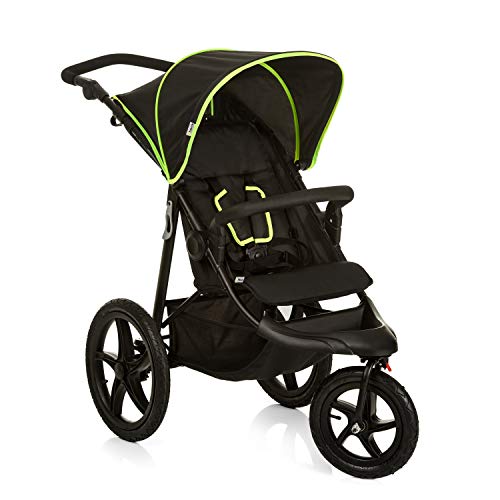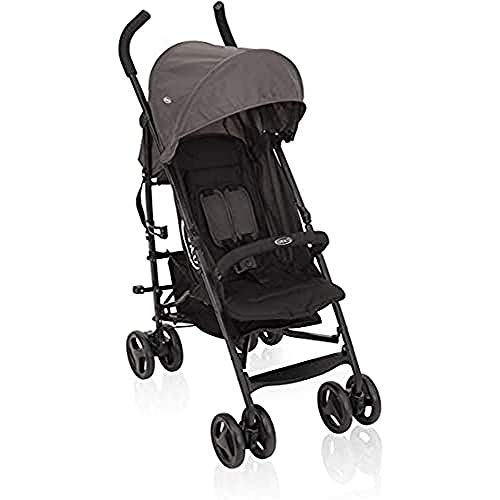The No. 1 Question That Anyone Working In Pushchairs From Birth Needs …
- 작성일24-09-21 09:00
- 조회3
- 작성자Corina
 Choosing Pushchairs For Your Baby
Choosing Pushchairs For Your BabyA stroller, buggy or pushchair can be used to transport infants. Prams have an a bassinet, carry cot or frame to connect a crib. Newborns must lie flat.
When your baby is able to sit up and has a good head control and head control, you can use the stroller with an incline that is facing away from or towards you. Many pushchairs have useful features such as swivel wheels or enclosed carrycots. They can be utilized as 3 in 1 systems.
Rear-facing
When it comes to selecting the right pushchair for your new baby there are a variety of choices to consider such as pushchairs and prams to buggies and strollers. They may sound similar but there are important differences between them. A pram is designed to lay flat, whereas a pushchair offers a seated position. Some babies can fit in both, but others require a carrycot until their necks and heads are strong enough to be supported in a seated position.
Most experts agree that it's recommended to use a pushchair with a parent's face for infants as young as just a few months old. Babies love looking at their parents and the visual connection it creates. This eye-contact is essential for their emotional development as they begin to process the world around them. As they observe their parents' interactions with each other and interact with each other, they also begin to develop language skills.
When babies can see their parents and feel secure and confident. They know they can count on their parents to safeguard their children and assist them in navigating their environment. This early confidence can help a child grow in confidence and feel well-being when they are toddlers and begin to explore the world.
A parent-facing pushchair lets you easily observe your child while they are in their seat. It is simple to ensure that they're comfortable and happy, and that their hat doesn't fall over their eyes or the wind isn't blowing on their face. Babies who see their parents' faces are more likely to sleep because they feel reassured by their familiarity.
There are a variety of options for parents who want to keep the baby in a pushchair facing the parent for as long as you can. Some are designed to change between forward-facing and front-facing, while others have an extended footmuff to keep your child warm in cold weather or a rain cover to keep the elements out. The Eezy S Twist+2 is an excellent model of a flexible pushchair that can be changed from a parent-facing unit to forward-facing seat unit at the flick of an lever. It can also be fitted with an Cocoon S car seat, Cot S or carrycot to make an all-in-one Travel System.
Forward-facing
A forward-facing pushchair allows children to explore their surroundings and enjoy the sights, smells and sounds around them. The baby can also see his parents, which is important for social development. Based on their own developmental milestones, most babies will be able to move from the carrycot or pram for newborns to a forward-facing pushchair around six months. If they have enough head and neck control to to safely face forward, this is the right time.
Researchers have found that babies who face their parents in a pushchair looking forward are more likely to speak back and show a lower heart rate, which indicates that they are less stressed. They also pay more attention to what is going on around them and with their parents. This stimulates their minds and improve their language skills. Parents are also more likely to chat with their child when they are able to make eye contact with them. This is reassuring and comforting for them.
There are numerous advantages of using a front-facing pushchair from the beginning, such as being capable of using it for longer walks. It is possible to bring your child along shopping and for other activities that require walking. A pushchair or stroller will allow your child to experience the same activities as their older siblings, which will help them build self-esteem and confidence.
Find a pushchair that comes with many accessories like an armband, a footmuff and pram blanket. A hood and a parasol are essential for helping to protect your baby from the sun, particularly in hot weather. Select a parasol that has an SPF rating or UV50+ and make sure it's made to fit your stroller and is easy to attach. Certain brands offer a range of accessories. Some come together with the pushchair, while others can be purchased separately.
Many pushchairs can be converted into double by adding an additional seat unit or carrycot. This is especially useful for families who are expecting another child shortly after the first. Some of these models include everything you require to convert and some include a converter kit that can be purchased separately.
All-terrain
For those who live up a country road, enjoy a woodland walk or spend much time walking, you'll need a pushchair that's built to withstand the rough roads and muddy fields. All-terrain pushchairs are made to handle any terrain, and come with features such as suspension to cushion bumpy rides for your child, so they don't shake up more. They also come with a seat that's angled to distribute the impact and force of bumpy ground evenly over your child's neck and head, so they won't be shaken as much as they would in a lower-quality stroller.
 Most all-terrain pushchairs are three-wheelers. They have an front wheel that can swivel and lock into place for maximum mobility, which is essential when you're on rough terrain. They also have larger tires than your typical pushchair. This means they can withstand rougher terrain and offer the most comfortable ride for your child.
Most all-terrain pushchairs are three-wheelers. They have an front wheel that can swivel and lock into place for maximum mobility, which is essential when you're on rough terrain. They also have larger tires than your typical pushchair. This means they can withstand rougher terrain and offer the most comfortable ride for your child.Another aspect to take into consideration when choosing an all-terrain pushchair is whether the wheels are filled with foam or air. Air-filled tyres are smoother on rough terrain, but they do puncture more easily if you come into contact with sharp objects. Foam-filled tires are more robust and less likely to puncture. This makes them a better option for strollers pushchairs that are all-terrain.
Many all-terrain pushchairs also convert from single to double mode for a growing family, and some can even be used as a travel system with car seat adaptors, which makes them ideal options for parents with young children. Some models, such as the Out 'n' About Nipper are suitable for newborns due to their near-flat seats and the fact that you can use a carrycot with them (although it isn't suitable for sleeping at night).
The Nipper also comes with a range of pushchair accessories, including a raincover and an earmuff. It is easy to store because it folds compactly with one hand and stands on its own when folded. It has a 360-swivel lockable wheel and tyres that are foam-filled, never flat.
Weight
The choice of the best pushchair is an important decision that will affect the manner you travel pushchair with your infant. The best model will allow your child to develop and grow in comfort, while allowing you to enjoy all of the family adventures that are yet to come. This is a significant purchase, so be sure you pick one that is suitable for your budget and lifestyle.
The first step is to understand the difference between a pushchair newborn, pram and buggy, and the differences between a travel system and a single pushchair. This guide will help parents comprehend the jargon and decide which is best for their newborn push chair baby.
A pram, as its name suggests, is designed for newborns and babies from six months to six months old. It allows the baby's back to develop properly, by allowing them sleep on their backs. Some models include bassinets which can be used in the beginning of the year to provide your baby with an environment that is safe and comfortable for your baby.
However, you should be aware that not all pushchairs claim that they can lie flat actually do so. Beware of claims by manufacturers that a product can recline flat. Always check the fine print and find out what it really means. Some pushchairs only allow some degree of recline, which is better than a fully-reclining seat.
Once your baby is old enough to sit unaided, it's the time to move them into a pushchair seat. It usually happens between three or four months, but some littlies will begin sitting up much earlier. It's best to buy a pushchair that is able to transform from a carrycot into a seat. This will give you flexibility and keep your baby safe until they're ready for the next stage.
Parents prefer a light pushchair with just one pedal for brakes, especially when they want to talk or carry shopping bags using their hands. Our MFM home tester Jessica gave this pushchair a thumbs up, stating that "it performs flawlessly, with a smooth, pleasant ride and the one-handed fold is amazing". The lightweight model features Tru-Ride technology tyres, which are tough, puncture-resistant and provide a high degree of performance.
등록된 댓글
등록된 댓글이 없습니다.
